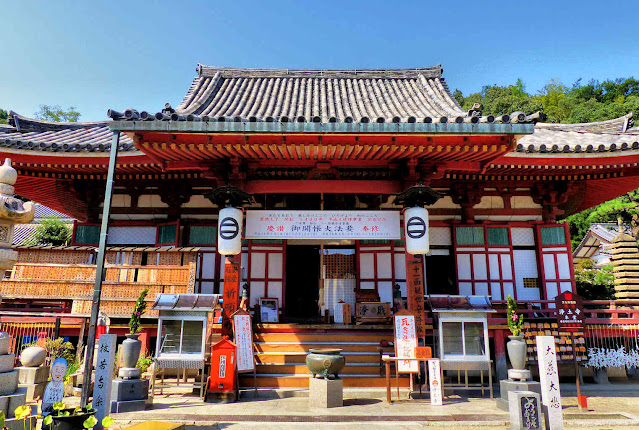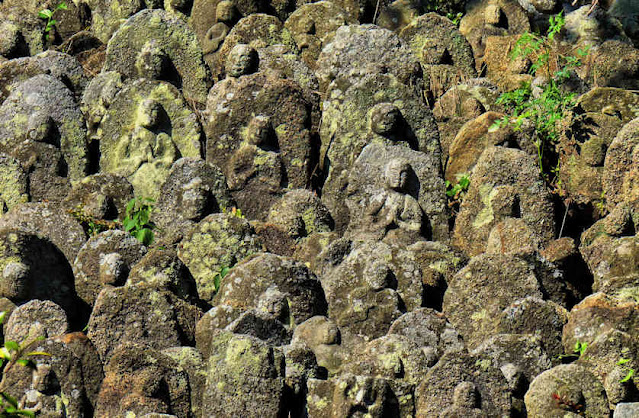Jodo-ji Temple in Onomichi, the historic port on the Hiroshima coast is said to have been founded by Shotoku Taishi in the early 7th century.
However, no records exist to prove that, although there was some kind of religious site here 400 years later at the end of the Heian Period.
The main gate dates to the mid 14th century and is an Important Cultural Property.
The main hall, left in the photo above, and photo below, dates to 1327 and is a National Treasure.
The honzon is an Eleven-faced Kannon, and the temple now belongs to the Shingon sect.
In 1325 a major fire burned down most buildings and so everything now has been built since then.
Ashikaga Takauji stopped here in 1336 on his way back from Kyushu and donated a set of poems.
He also made Jodoji one of his Ankokuji, nation-pacifying temples.
Below is the Amida Hall, built in 1345 and enshrining Amida
It, along with the gate, Abbots Quarters (hojo), and several other structures and artifacts are also Important Cultural Properties.
The other Nationl Treasure at Jodoji is the pagoda.
This Tahoto-style pagoda was constructed in 1328 and emshrines Dainichi.
Apparently there is a Treasure House where some of the many treasures in the possession of the temple are on display, but I didn't visit it.
To view the gardens you go into the Abbots quarters, the hojo, which has a nice collection of painted screens seen in the final photos.
Usually statues of Binzuru are found on the veranda of a hall, but here he was inside.

































































